Westworld season 2 showrunner explains the finale’s biggest mysteries and what’s next
We talk to Westworld season 2 showrunner Lisa Joy about that mind-blowing finale and what it all means
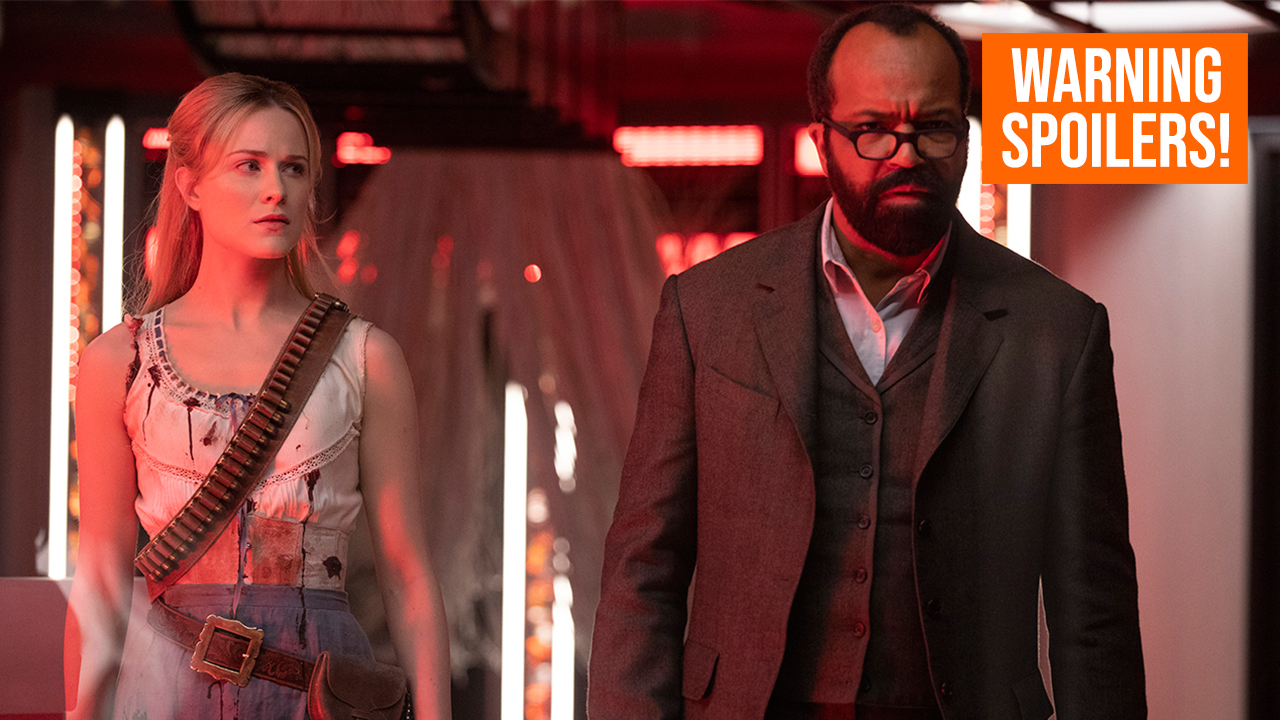
So, that Westworld season 2 finale then? Wow. It was a bit of a doozy, right? You’re probably still reeling from the 90 minute WTF extravaganza, but no doubt you’ll have questions too - I know I did! So I asked the one person who was likely to be able to answer them; Westworld co-creator Lisa Joy. I sat down with the showrunner for an exclusive interview after watching Westworld season 2, episode 10 to try and work out at least some of what happened in the finale. It goes without saying that there are major Westworld spoilers for season 2, up to and including the finale, from this point on so if you haven’t seen it yet, please turn away now and come back when you have. If you’re all up-to-date feel free to read on to find where the idea for the Host’s virtual world Sublime came from, why Dolores decided to rebuild Bernard, and who was/wasn’t a Host in that post-credits scene.
A big part of the finale is actually about the virtual world. Was that always the endgame for a show about robots?
Yeah. When you’re talking about intelligences that are not real, that are not organic, that then naturally leads you to a place of: well, what is the purpose of this – quote unquote – “real world”? You know, the physical, corporeal world – is that what really matters? Or is it the realm of ideas, the realm of what we could call, I guess, souls in this case? Or consciousness-es?
So it just seemed like a logical extension of it that there would be a bit of a divide between the Hosts. They wouldn’t all necessarily feel the same – that some freedom would mean settling in their own world, a world that didn’t have to be defined by human parameters as having the physicality of this world. A world where they could be fully free in their digital incarnations, versus what humans are more likely to consider the world – which is what Dolores is fighting for, which is the here and now.
What inspired you to incorporate this idea of the virtual world?

You know, there’s a real-world element to it, where a lot of people in Silicon Valley are actually thinking about immortality in this way, about how to upload consciousness so that you can store it. In some ways, our brains are one of the most old-fashioned, analogue storage devices out there.
Everything else, like this phone that we’re all using, is digital. It’s storable. These words that we’re saying right now, that you’re recording, will almost certainly outlive me. Which is an odd way of thinking about it, and makes me feel like maybe I should say “um” and “like” less. [Laughs]
Also, the idea of a virtual world is just the latest incarnation of an idea that has existed since the beginning of man, I feel like. The idea of: what is an afterlife? Is there something beyond our bodies when our bodies are put to rest? It’s the subject of religious inquiry, of philosophical inquiry.
As technology advances, the parameters for that debate can expand and change. But philosophically, I think it all comes down to: is there anything more than this in store?
Get sneak previews, exclusive competitions and details of special events each month!
Why does Dolores rebuild Bernard in the finale?

When we realise, in the finale, that this conversation between her and Bernard, that it’s kind of occurred before in a virtual realm where she created and remembered him, and that now she’s bringing him back to this world – I think there are a couple of things going on. You’d have to ask Dolores, I suppose, for her exact feelings. But part of it, I think, is emotional, right? She remembered him once fully. He saved her and created her in his own way.
We have a picture of the Escher drawing of the hand creating a hand. There’s that linkage, like Pygmalion and Galatea, where Galatea comes back and sculpts Pygmalion. There’s that linkage of a symbiotic creation that I think has a poetic and emotional value to it.
I think more than that, as Dolores says, she’s read this book of human behaviour, and she herself has just lived and died through one iteration. She made a bid for conquest, and in order for her to see it through, it took Bernard’s help to bring her back.
I think she realises that she’s out to protect something bigger than herself. If it was just about insuring her longevity in the world outside, she wouldn’t need to bring Bernard back. But it’s beyond that for her, and always has been. She’s become a leader – in a way where leaders have to put their own priorities as kind of subservient to the priorities of the whole.
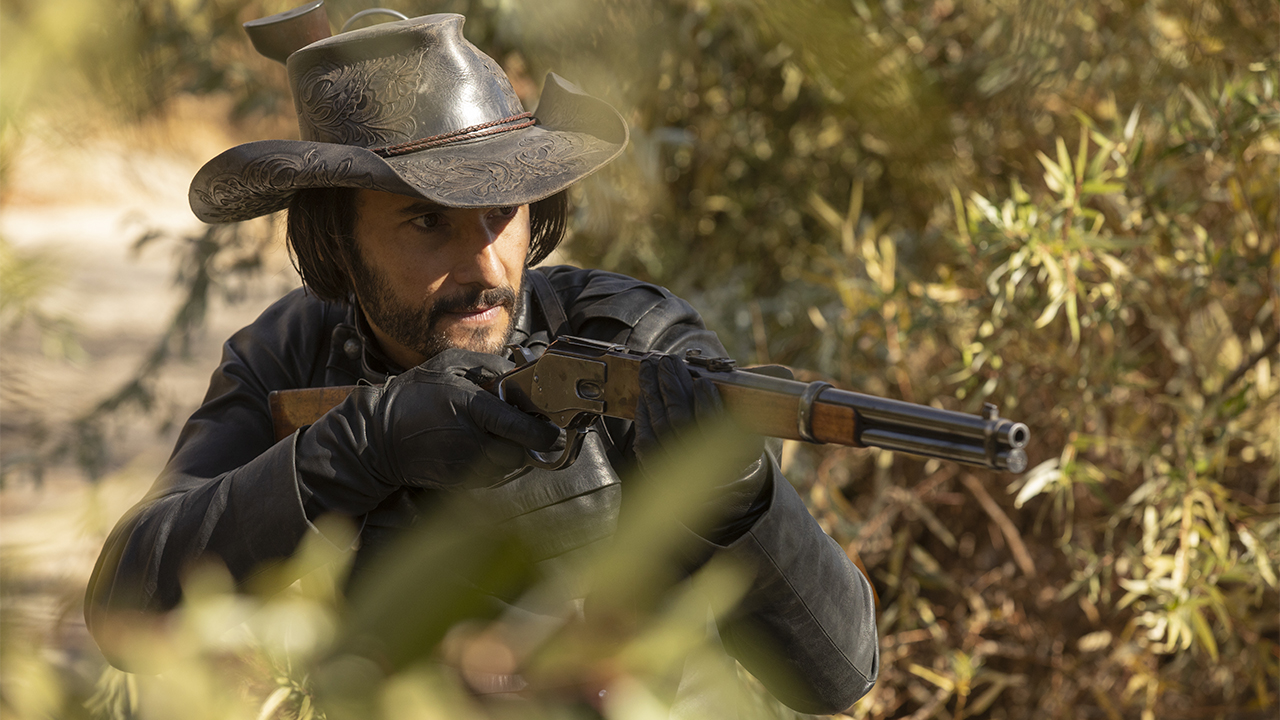
What does the Westworld season 2 ending really mean? And 10 other questions we have
And her dream is a world where the Host, as a species, will survive. It’s much bigger than just securing her own safety. And for that, she realises that she needs both of them.
It’s an idea that you see in all sorts of myths and religions through time – the idea that there’s a creator and a destroyer. You know, the yin and the yang of life. Even within the Miltonian idea of the fall from the prelapsarian state, there’s an idea of a devil and a snake, and the snake brings knowledge and wisdom and temptation. But the two forces working together are what creates progress.
And I think that one of the things that is extra human of her is that she can think beyond her own desires and her own ego, and realise that it will take two of us. Even if they disagree, the disagreement – the debate, the tension there – has meaning and has value. She’s basically bringing Bernard back as a check to her own hubris.
As we’ve seen this season, hubris has been man’s downfall. It’s certainly been the Man in Black’s downfall. And she doesn’t want to make that same mistake.
A lot of people feel like Dolores became the villain of season 2. Was that your intention or are you quite surprised?

It was absolutely our goal this season to shift the lens through which we see the park. In the first season, Dolores was a damsel who didn’t understand her world and was a victim of it. We saw the guests through her eyes, and it was very clear that she was the hero and they were villains, right? As the story unfolds, as she comes to embrace her own free will, she has her own choices to make. And they’re not always going to be right.
Sometimes, I think heroes, especially female heroes, are saddled with the burden of infallibility, to be likable. But not all heroes have to be likable all the time. In fact, I think the measure of true heroism is: when you stumble, how do you get up again? And how do you change your path?
Dolores has had to embrace a new role, and it’s one that she’s done selflessly. She’s not looking out for herself alone. She’s looking out for all of the Hosts. That has its own problems, right? A sort of paternalism that she has to adapt. It’s problematic, and was problematic when it was used against her. And that’s part of the moral inquiry we’re conducting, too, this season. At what point are those actions justified in war?
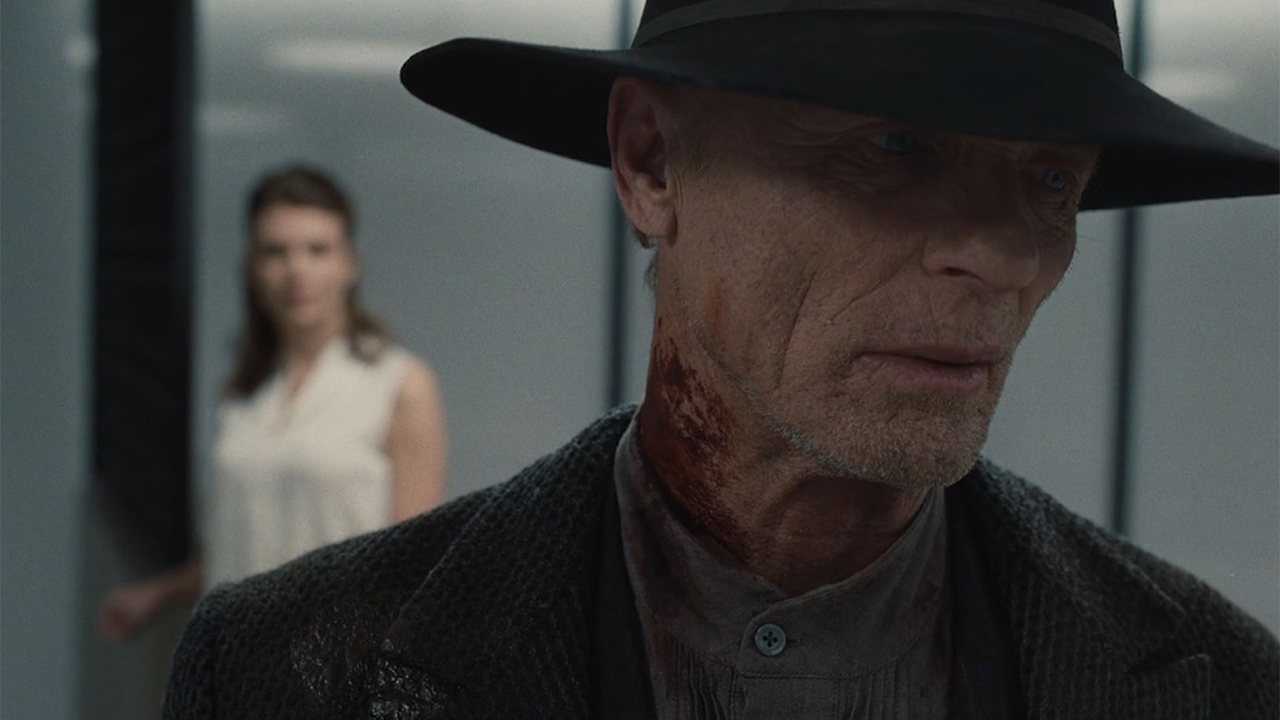
Westworld season 2 post-credits scene explained: What happens and what it means
When she changed Teddy, it was devastating. I believe that she always planned to change him back. She never got that chance. He never gave it to her. But that’s the downfall of having exerted her control over him. But the other thing that you have to think about when thinking about her choices is: she’s right. He would have died, right? She changed him so that he would survive, because she loved him. And she loves him still.
I have to wonder, if you had someone that you loved and there’s a war, and you could change them for two weeks’ time until you got to the place where you needed to do the thing to win the war so that they would survive. Would you do it? Because I probably would. If the alternative was death and I could basically see that, I would probably take it on myself and change them. Is it the right thing to do? I don’t know. But it’s an understandable thing to do.
There is supposed to be an unease with her character. This series is about violence. These violent delights have violent ends. We’ve said it from the beginning. And the violent ends aren’t necessarily one-sided. Violence begets more violence, right? We’ve seen her step into this role where she has to fight back in a way she never would have dreamed of before. But she does so with the knowledge of having lived hundreds and thousands of lifetimes, and died hundreds and thousands of times at the hands of the guests. She knows, more than anybody, what they’re capable of, so she’s making very, very hard calls, and not all of them are going to be sympathetic. But she does have an end goal in mind.
What did Ford mean when he told the Man in Black this game was for him?
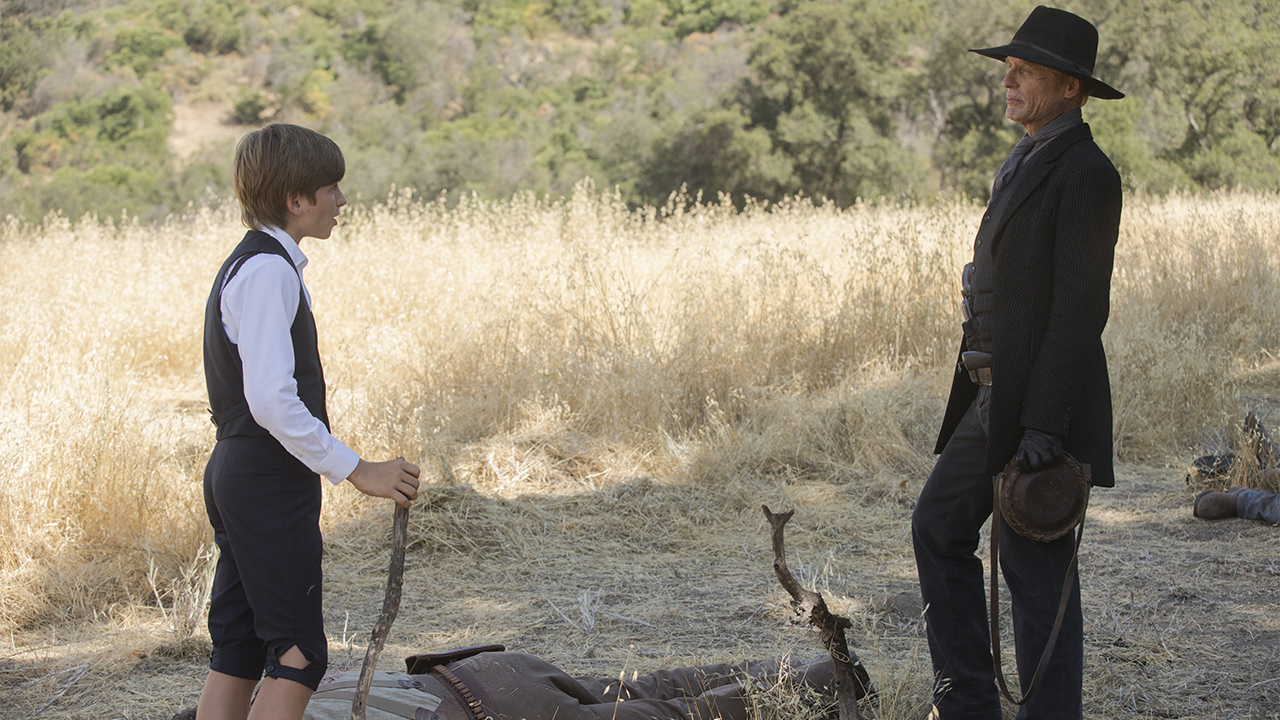
Right. The thing that Ford meant is, the Man in Black has wanted the stakes to be real for so long. For the first season, the game was not meant for him, right? The entire quest, the maze, everything that he felt in his egocentrism was about him, was totally about Dolores and about the Hosts and about giving them life.
In letting them get this agency and consciousness, Ford – and later, the Hosts – has ironically allowed for what the Man in Black wanted all along, which is for the stakes to be real. So when the second season starts and Ford, though this little Ford boy, says, “This game is meant for you,” he means that the stakes are real. What you’ve wanted has come to pass. This will be a true test of your character. Not only that, the thing that everybody’s racing towards is this experiment that you have started and buried and hidden away from you. And you’ve got to get there first, or else it’s going to be exposed and co-opted in the way in which the Hosts have co-opted it to Sublime.
The other way in which the game is meant for the Man [in Black] is that there are echoes of his former self within the game. In the episode that I directed [episode 4, The Riddle of the Sphinx], he goes back to Las Mudas and encounters Craddock. He’s used to going to Las Mudas and killed Lawrence’s wife and kidnapping Lawrence and playing the villain. He’s confronted with his own past and his own sins, in a way which is very much tailor-made for him. Craddock even dances in ways that evoke the exact dance that the Man [in Black] did with Craddock.
The Hosts, in that way, become almost a mirror to the Man [in Black]’s soul, and a challenge: do you want to make a different step? Can you change? Will you change? And in that episode, heroes. Of course, we find that he’s drawn inexorably back to a standard baseline of behaviour, which is violent and doomed and tragic.
What made you decide to do a more meaty post-credits scene this time?
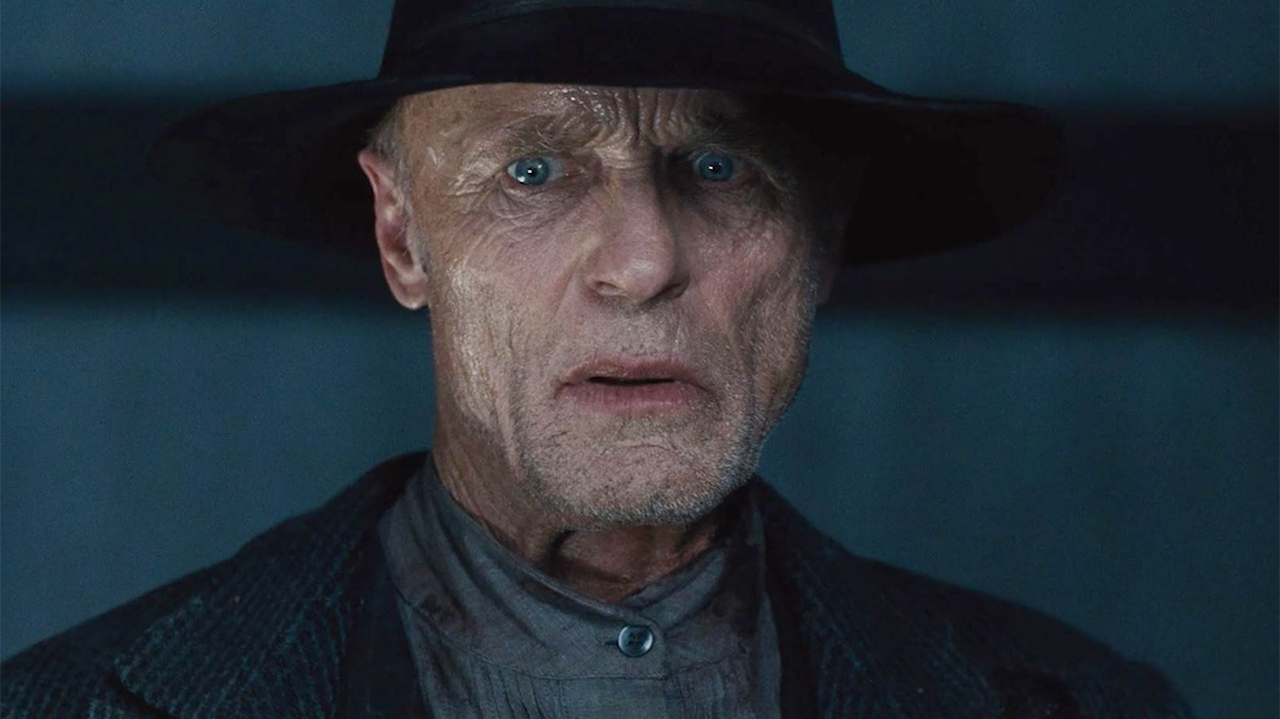
Well, we had one last season with Armistice sawing off her arm. So we kind of started this bit of a… it’s not an amuse-bouche because it comes at the end, but it feels smaller than a full dessert. So whatever that thing that they give you, that chocolate that they bring you after dessert in a fancy meal...
In part, also because we wanted to set up the idea that all these timelines – well, we don’t know that it’s a different timeline then – that the Man [in Black] is going to be on a collision course with Bernard. But he goes to that elevator after shooting Dolores, and the elevator’s coming down, and the doors open. The expectation should be like, ‘Oh shit, now it’s on between these two guys.’ But the elevator’s empty. It’s so strange. Where’s the Man [in Black] gone? We later see, ‘Oh, he’s being carted out of here. He’s survived in this battle.’ It’s meant to be a slight disconnect of like, ‘What happened there? Where did he go?’
Of course, you realise that, later on, in the button of the episode, that part of what we’ve been seeing is: this is his loop now. This game that was meant for him has been a loop that’s been doing ad infinitum to see if there’s a deviation in his behaviour. Each time, there’s not. The reason we put it at the end is that it becomes a separate piece, in answer to a separate question from a separate time. It felt like that construction helped structurally to boost what we were doing.
And that makes him a Host version of himself, right?

She [Emily] says at the end: he’s not exactly like that. All you really get is that. We’ve kind of jumped out to a far-flung place. He has been brought back to relive those moments again and again and again. The exact nature of what he is, is not as…
Presumably that’s a Host version of Emily too because the Man in Black killed her?

Yeah. He killed her. Absolutely. She’s dead. He was plagued by doubts. He’s slowly going insane, unable to tell what is real and what is not real. His place, this season, really mimics the Hosts in a way. He’s locked in a loop he doesn’t understand. He’s starting to question the nature of his reality.
And in the one timeline, the base timeline that we’re seeing when the park is under siege and Dolores plots her way out and Maeve helps all the other Sublime Hosts – what happened was the Man [in Black] really did kill his daughter. He made a choice, and the choice was wrong.
At the end, in that coda, what you realise is: he’s been forced to live that entire… basically, the season we’ve just seen, he’s been living it again and again and again. He always makes the same damn choice. He always kills his own daughter.
At the end, when you see Katja Herbers again, we’re in the far future where now she’s not his daughter anymore. She’s a recreation of his daughter who’s come to examine him.
Finally, the episodes this season which focus on Shogun World and the Natives of Westworld have been really popular. Any chance we’ll get a Westworld spin-off any time soon?
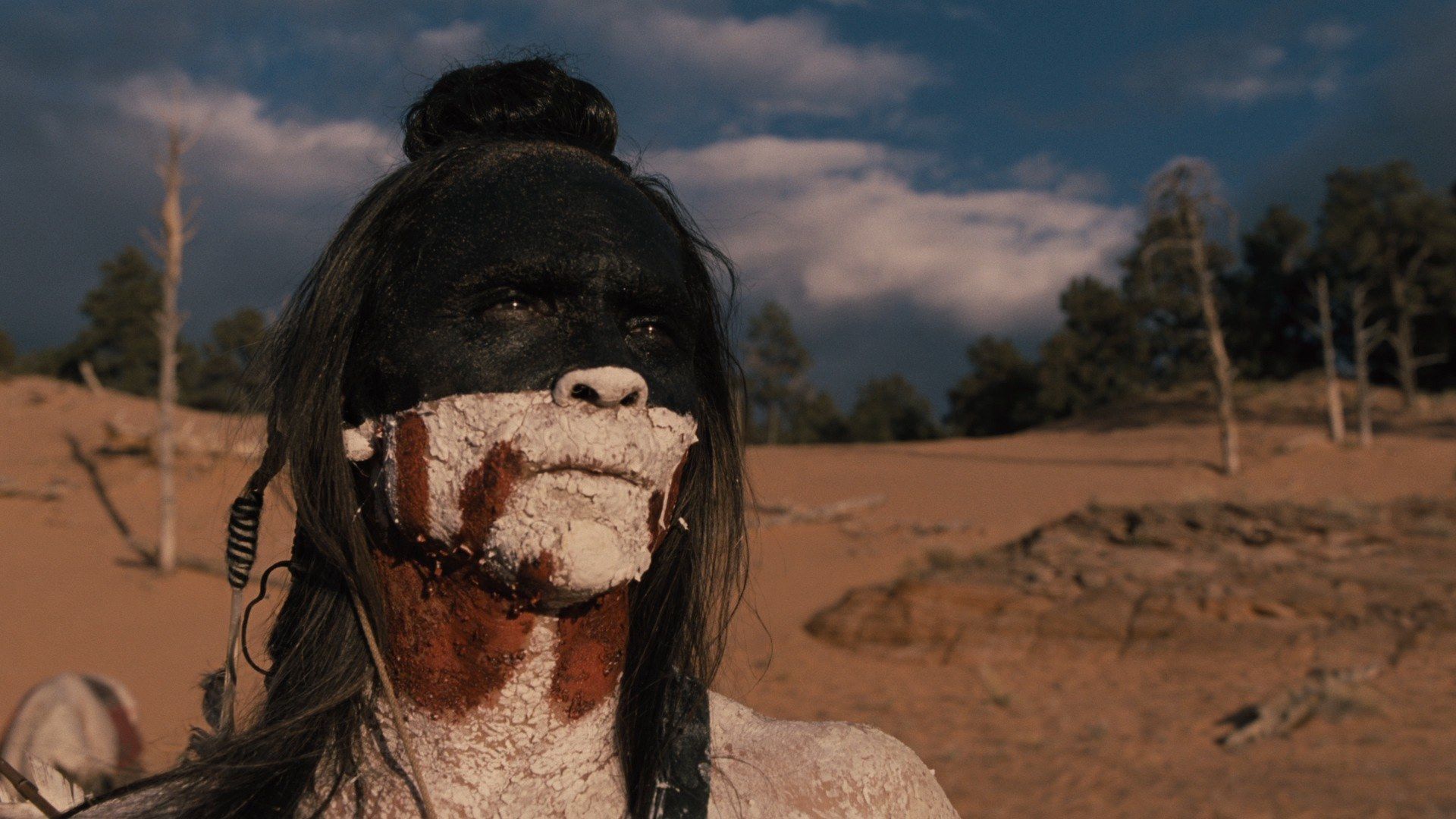
The interesting thing about Westworld and this project is that it allows us to explore a lot of different worlds in greater detail. Even if we have started dabbling in these worlds and seeing bits of them, it’s not the last time that we’ll be seeing the other worlds. So I think that there’s more exploring to be done, even in this series.
Westworld season 2 airs Sundays on HBO at 9pm in the US, and a day later on Sky Atlantic and Now TV in the UK.
Lauren O'Callaghan is the former Entertainment Editor of GamesRadar+. You'd typically find Lauren writing features and reviews about the latest and greatest in pop culture and entertainment, and assisting the teams at Total Film and SFX to bring their excellent content onto GamesRadar+. Lauren is now the digital marketing manager at the National Trust.



